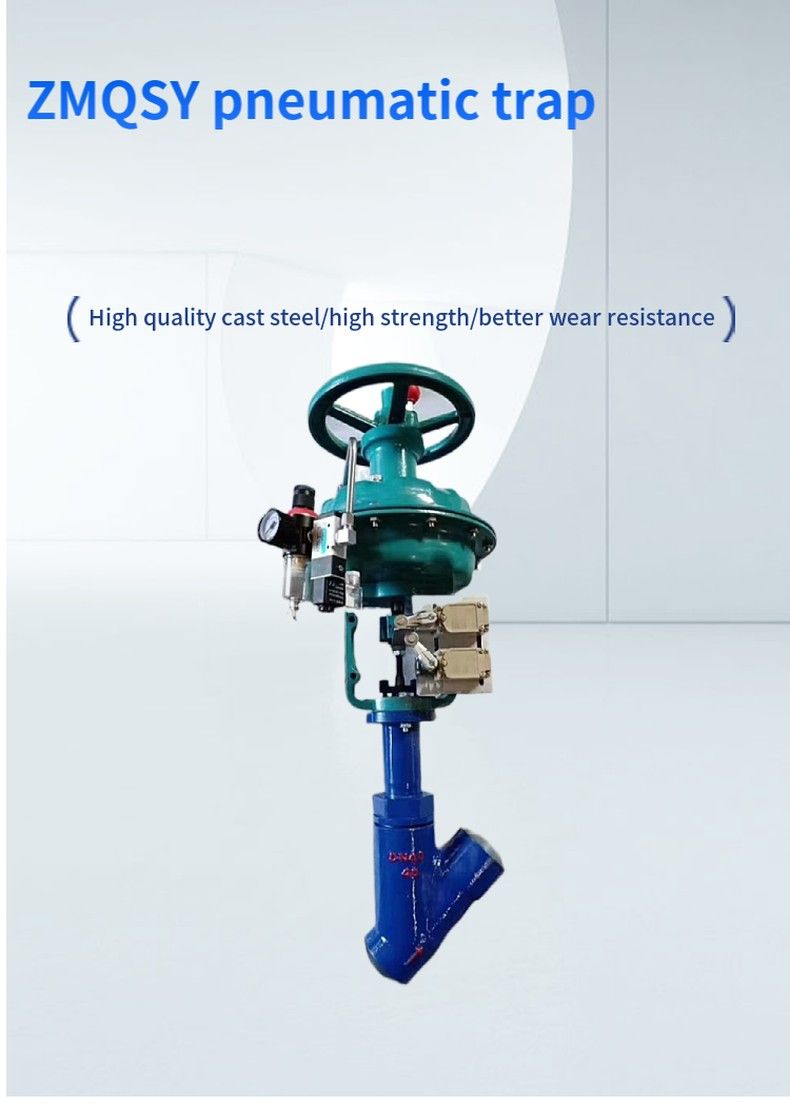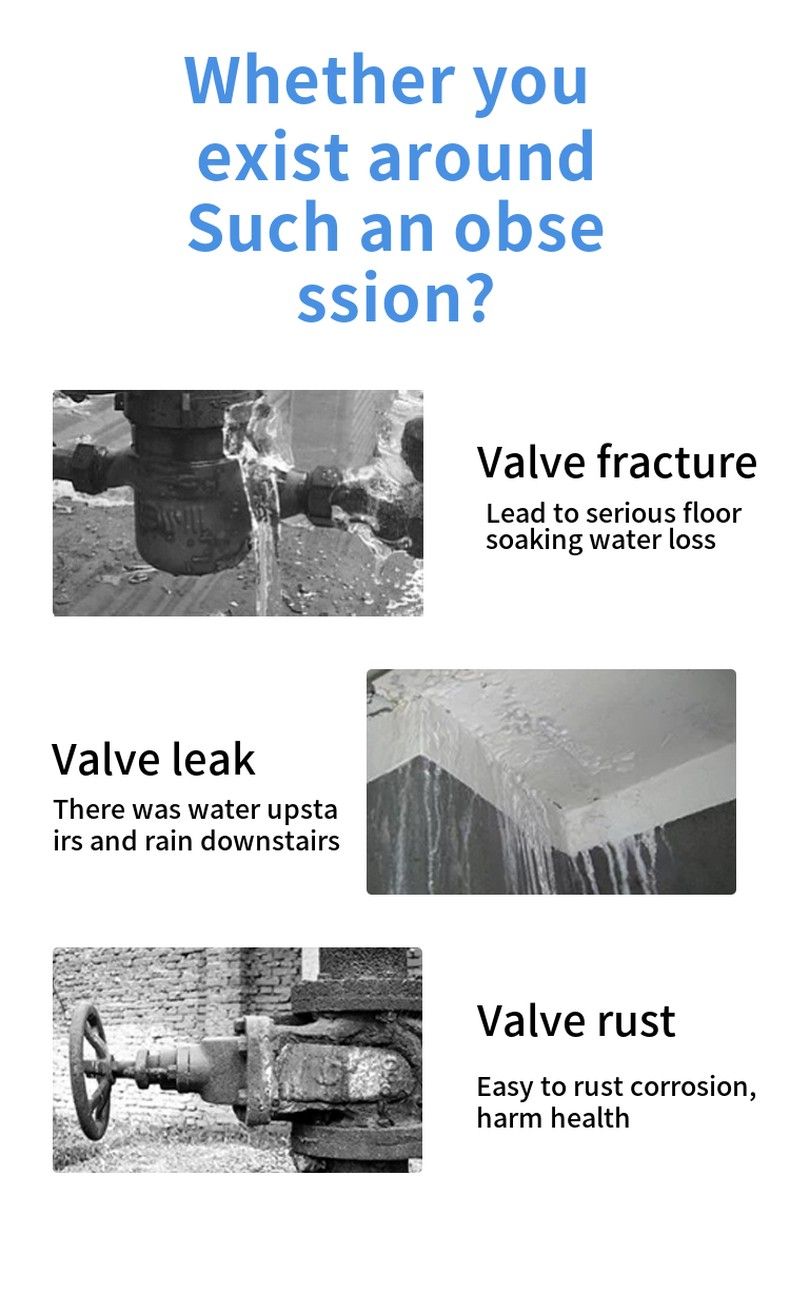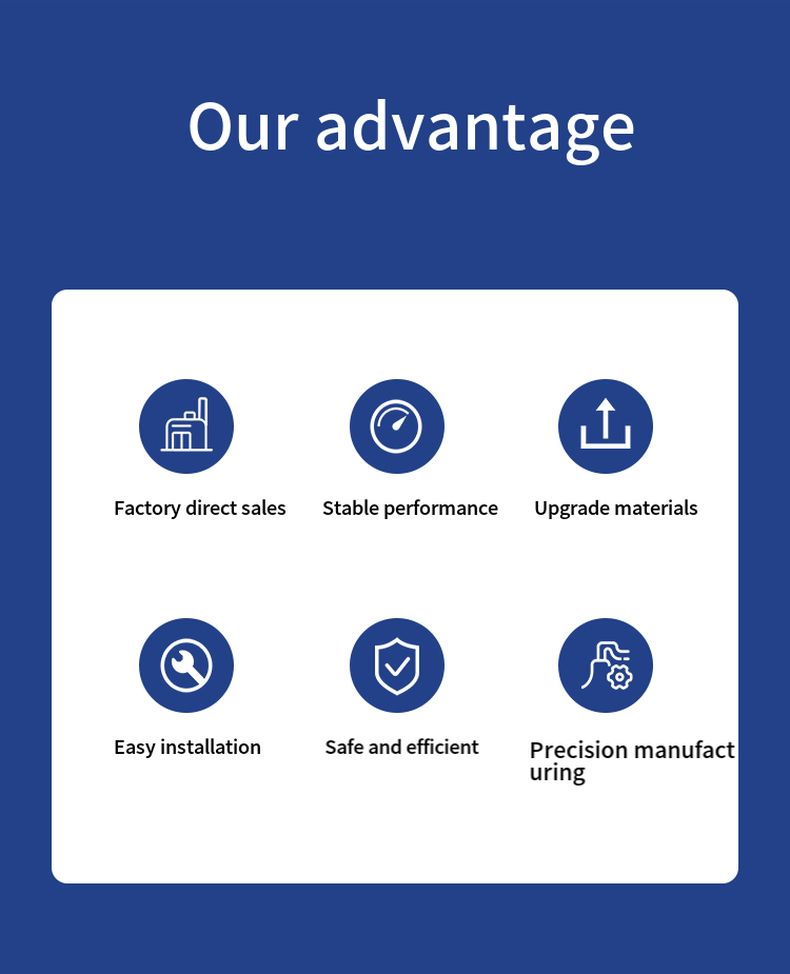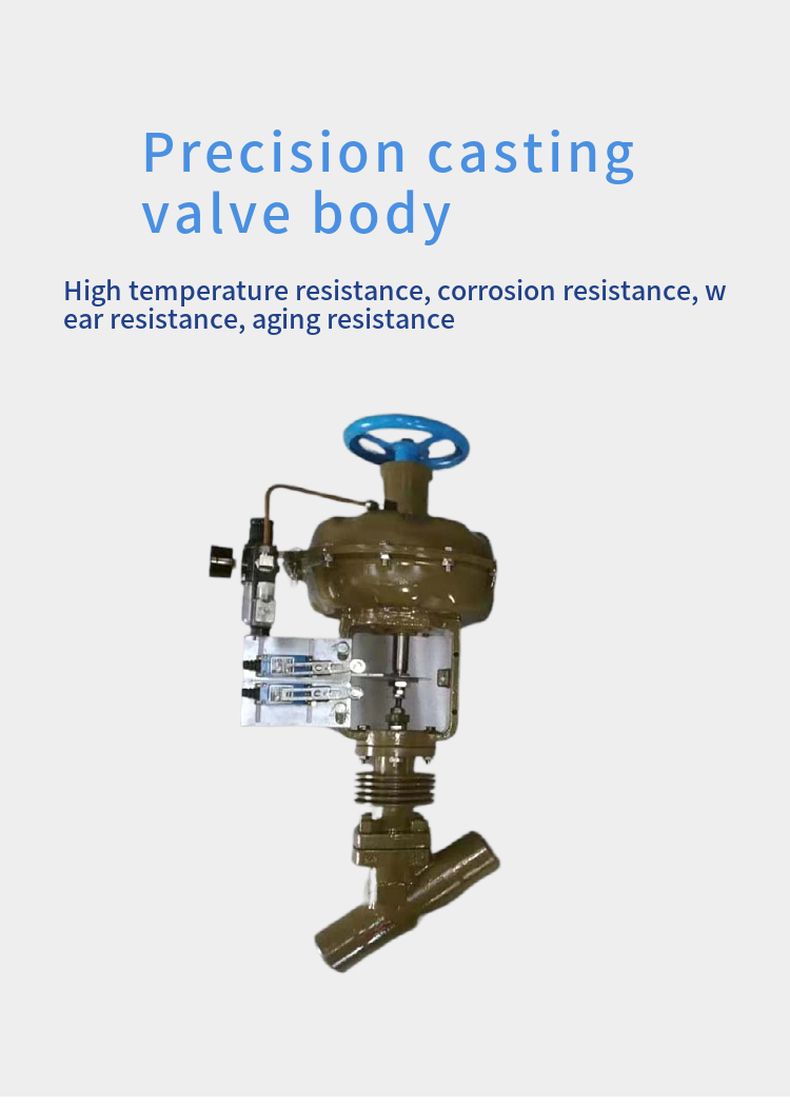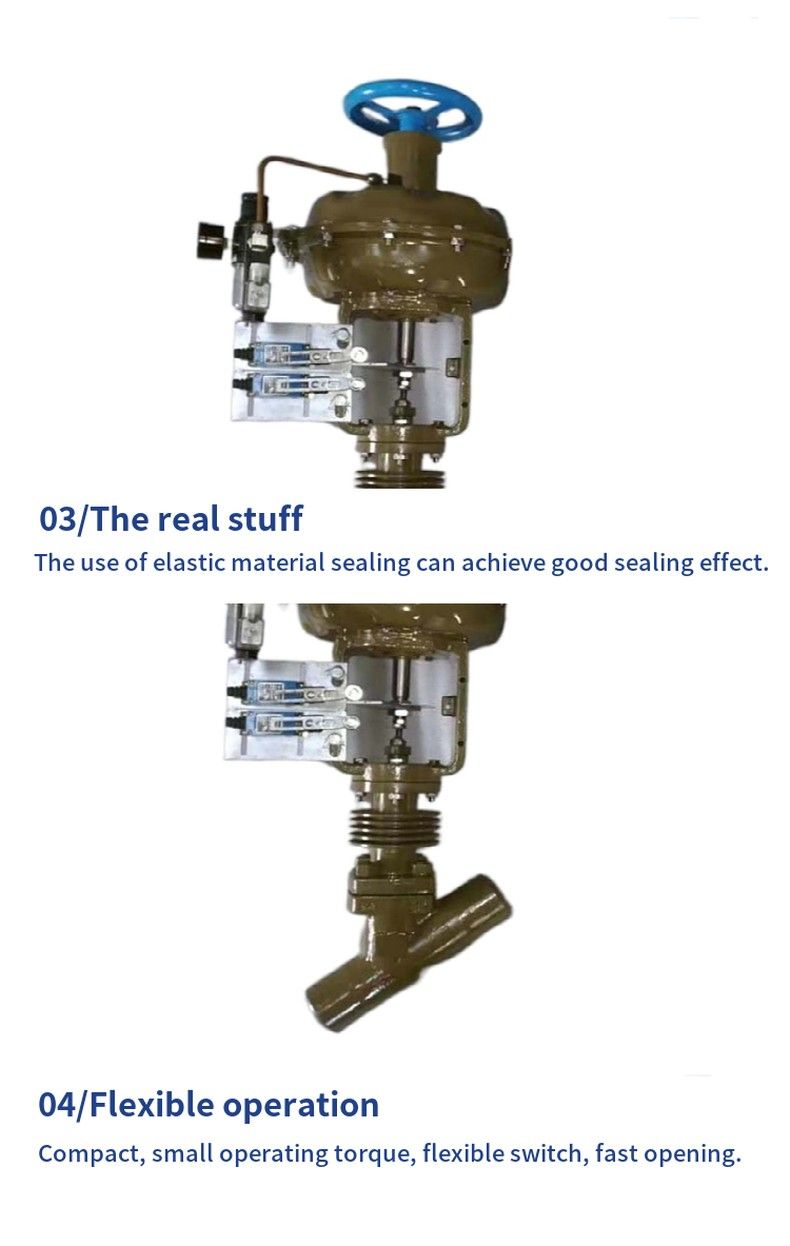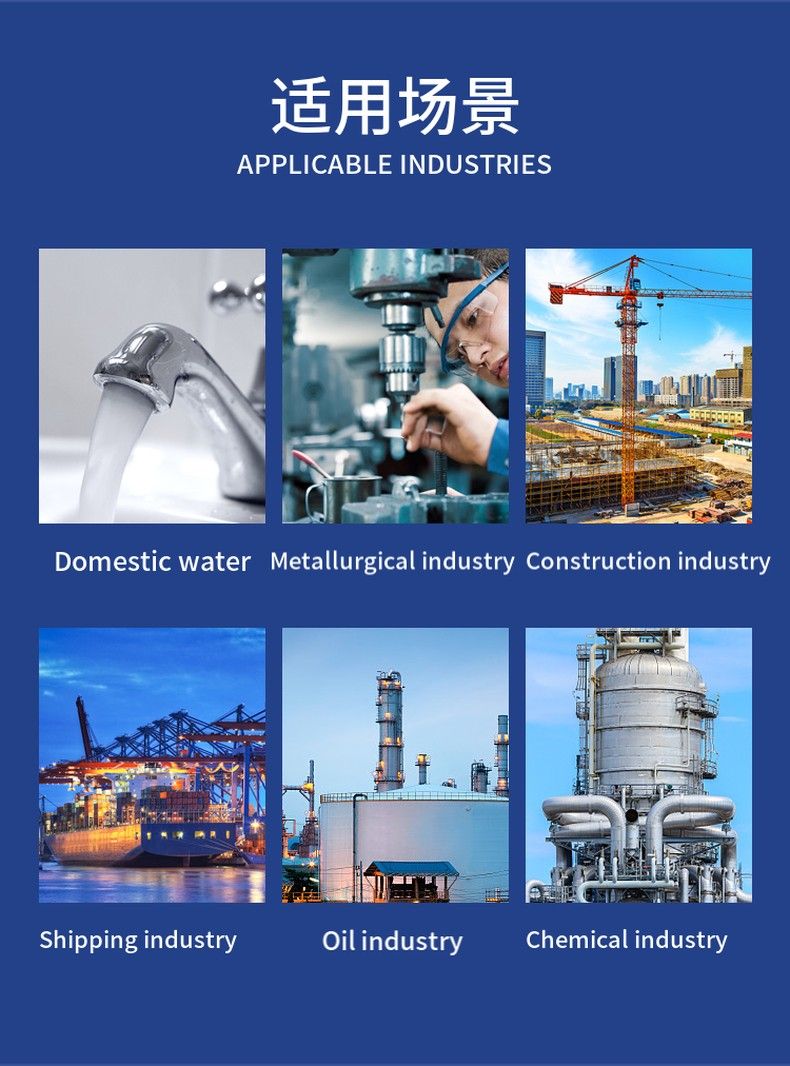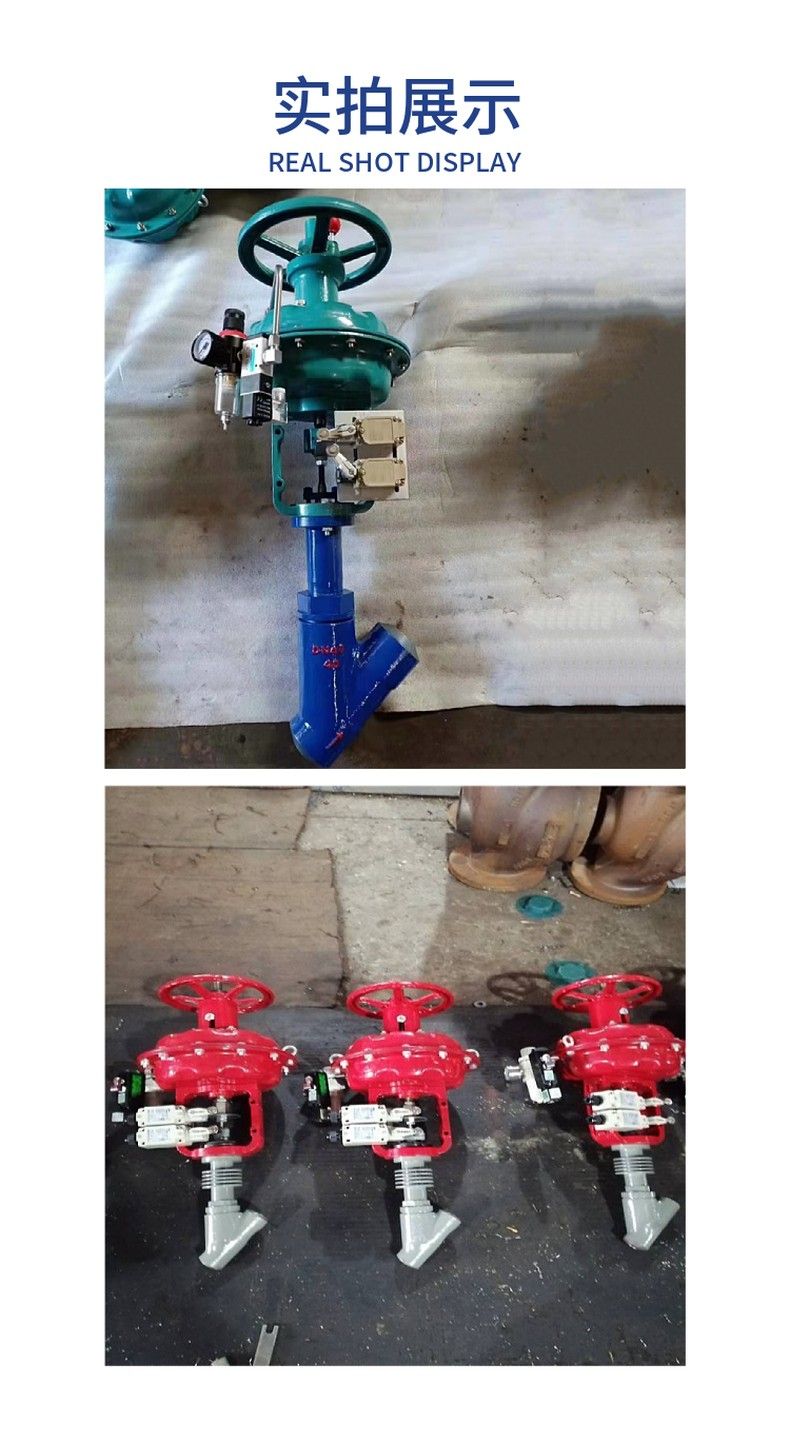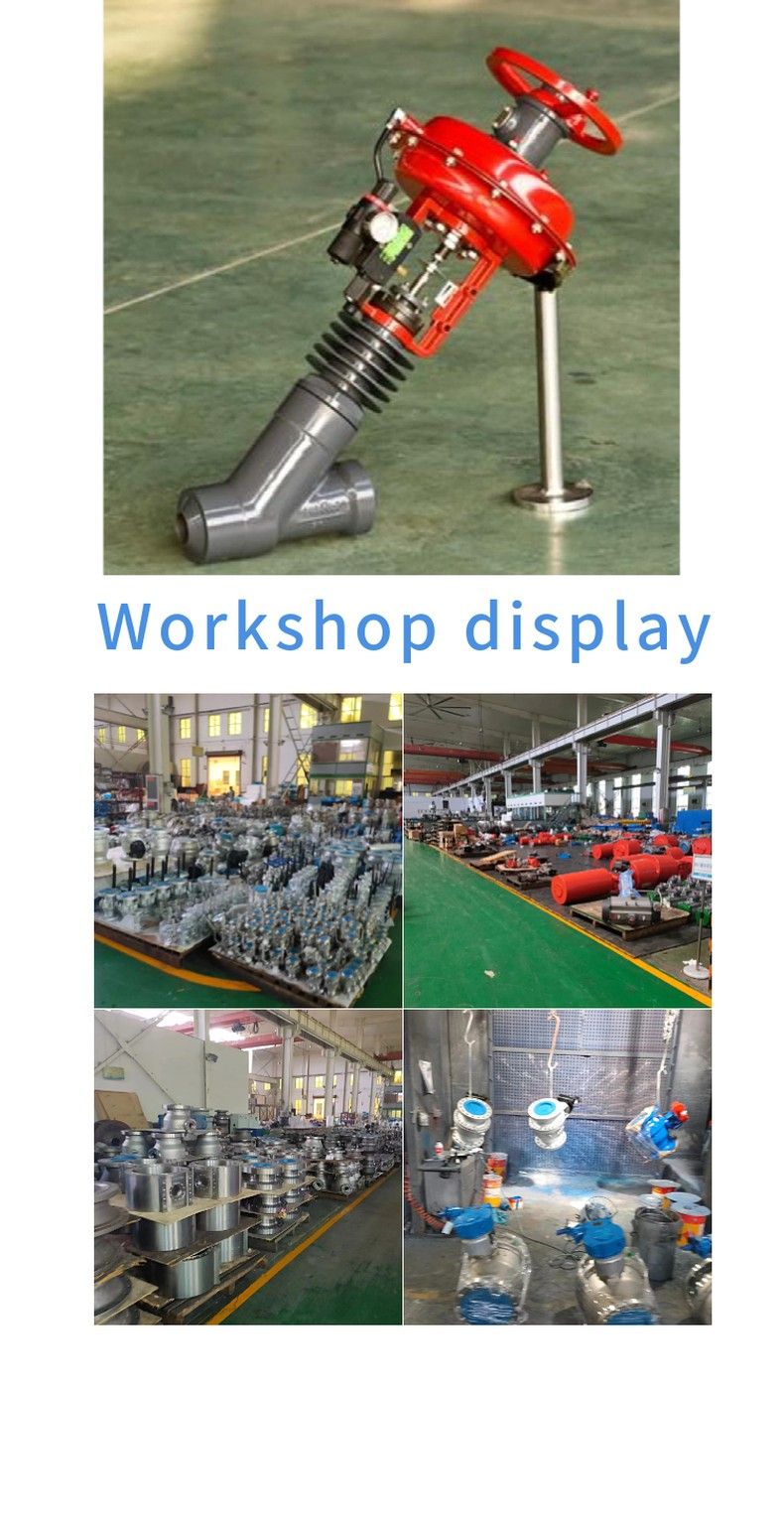Home >> Products >> Steam trap
ZMQSY pneumatic traps are known as automatic drainers or condensate drainers, which are divided into steam system use and gas system use. The trap is installed at the end of the pipe heated by steam, and its function is to discharge the condensate in the pipe heated by steam to the outside of the pipe. Most traps can automatically identify steam and water (not including thermostatic type), so as to achieve the purpose of automatic steam drainage. The trap is widely used in petrochemical, food and pharmaceutical, power plant and other industries, which plays a great role in energy saving and emission reduction.
What kinds of pneumatic trap are there
1. Mechanical trap:
Mechanical type, also known as float type, is to use the density difference between condensate and steam, through the change of condensate level, so that the float lift drives the valve flap to open or close, to achieve the purpose of steam drainage. Mechanical trap undercooling degree is small, not affected by the working pressure and temperature changes, there is water drainage, heating equipment does not store water, can make the heating equipment to achieve the best heat exchange efficiency. The maximum back pressure rate is 80%, the working quality is high, and it is the ideal trap for heating equipment in the production process.
Mechanical trap has free float type, free half float type, lever float type, inverted bucket type and so on.
(1) Free float trap:
Simple structure, the internal only one moving parts fine grinding stainless steel hollow float ball, both float and opening and closing parts, no vulnerable parts, long service life, the trap with Y series automatic air exhaust device, very sensitive, can automatically exhaust air, high working quality. When the equipment just starts working, the air in the pipeline is discharged through the Y series automatic air exhaust device, the low temperature condensate enters the trap, the liquid level of the condensate rises, the float rises, the valve is opened, the condensate is quickly discharged, the steam enters the equipment quickly, the equipment heats up rapidly, the temperature-sensitive liquid of the Y series automatic air exhaust device expands, and the automatic air exhaust device is closed. The trap starts to work normally, and the float rises and falls with the condensate level to block steam and drain water. The valve seat of the free float trap is always below the liquid level, forming a water seal, no steam leakage, and good energy saving effect. The minimum working pressure is 0.01Mpa, from 0.01Mpa to ≤ use pressure range is not affected by temperature and working pressure fluctuations, continuous drainage. It can discharge saturated temperature condensate, the minimum subcooling degree is 0 ° C, and there is no water in the heating equipment, which can make the heating equipment achieve the best heat exchange efficiency. The back pressure rate is greater than 85%, and it is one of the ideal traps for heating equipment in the production process.
(2) Free half float trap:
Free half float trap only a half float type ball bucket for the moving parts, the opening is down, the ball bucket is the opening and closing parts, but also the sealing parts. The whole sphere can be sealed, the service life is very long, can resist water hammer, no wearing parts, no fault, durable, no steam leakage. The back pressure rate is greater than 80%, can discharge saturated temperature condensate, the minimum subcooling degree is 0 ° C, there is no water in the heating equipment, which can make the heating equipment achieve the best heat exchange efficiency.
When the device is just started, the air and low temperature condensate in the pipeline enter the trap through the launch tube, the bimetal plate empting element in the valve flicks the ball bucket open, the valve is opened, and the air and low temperature condensate are quickly discharged. When the steam enters the ball barrel, the ball barrel produces upward buoyancy, while the temperature in the valve increases, the bimetal sheet emptyelement shrinks, the ball pokes to the valve port, and the valve closes. When the steam in the ball bucket becomes condensed water, the ball bucket loses buoyancy and sinks, the valve is opened, and the condensed water is quickly discharged. When the steam enters the ball bucket again, the valve will be closed again and work intermittently and continuously.
(3) rod float trap:
Lever float trap basic characteristics and free float type the same, the internal structure is the float connected lever to drive the valve core, with the condensate level rise and fall to switch the valve. The lever float trap uses double seats to increase the condensate displacement, which can achieve small volume and large displacement, and the maximum water drain can reach 100 tons/hour, which is the ideal trap for large heating equipment.
(4) Inverted bucket trap:
Inside the inverted bucket trap is an inverted bucket for liquid level sensitive parts, the opening of the bucket is downward, and the inverted bucket is connected with a lever to drive the valve core to open and close the valve. Inverted bucket trap can discharge air, not afraid of water strike, good anti-fouling performance. The supercooling degree is small, the steam leakage rate is less than 3%, the maximum back pressure rate is 75%, the connecting parts are more, and the sensitivity is not as good as the free float trap. Because the inverted bucket trap is closed by steam upward buoyancy, when the working pressure difference is less than 0.1MPA, it is not suitable for selection. When the device is just started, the air and low-temperature condensate in the pipeline enter the trap, the inverted bucket falls by its own weight, and the inverted bucket is connected with a lever to drive the valve core to open the valve, and the air and low-temperature condensate are quickly discharged. When the steam enters the inverted bucket, the steam of the inverted bucket generates upward buoyancy, and the inverted bucket rises and connects the lever to drive the valve core to close the valve. There is a small hole on the upside bucket, when part of the steam is discharged from the small hole, the other part of the steam produces condensate, the upside bucket loses its buoyancy and sinks to the bottom by its own weight. The upside bucket is connected with the lever to drive the valve center to open the valve, and the cycle work and intermittent drainage.
(5) Combined superheated steam trap:
The combined superheated steam trap has two isolated valve cavities, which are connected by two stainless steel tubes to the upper and lower valve cavities. It is a combination of floating ball type and inverted bucket type trap. The valve structure is advanced and reasonable. Under the working conditions of overheating, high pressure and small load, it can discharge the condensate formed when the superheated steam disappears in time, effectively prevent the superheated steam leakage and has high working quality. ≤ Allowable temperature is 600ºC, the valve body is all stainless steel, the valve seat is hard alloy steel, long service life, it is a special trap for superheated steam, and it has obtained two GB products to fill the domestic gap.
When the condensate water enters the lower valve chamber, the float ball of the secondary valve rises with the liquid level, and the float ball closes the steam inlet pipe hole. The condensate rises to the main valve cavity through the inlet pipe, and the inverted bucket falls by its own weight, driving the valve core to open the main valve and discharge the condensate water. When the condensate level in the secondary valve chamber drops, the float drops with the liquid level and the secondary valve opens. The steam enters the inverted bucket in the upper main valve chamber from the steam inlet pipe. The inverted bucket generates upward buoyancy, and the inverted bucket drives the valve core to close the main valve. When the condensate level in the secondary valve chamber rises again, the next cycle begins again and discontinuous drainage is performed.
2. Thermostatic trap:
This kind of trap is the use of steam and condensate temperature difference caused by the change of the temperature sensing element or expansion to drive the valve core opening and closing valve. The supercooling degree of thermostatic trap is relatively large, the general supercooling degree is 15 degrees to 40 degrees, it can use a part of the condensate in the sensible heat, there is always high temperature condensate before the valve, no steam leakage, energy saving effect *. It is the ideal trap in the steam pipeline, heat tracing pipeline, small heating equipment, heating equipment, small heating equipment with low temperature requirements.
Thermostatic trap has diaphragm type, bellows type, bimetal plate type
(1) Bellows type trap:
The main operating element of the bellows trap is a metal diaphragm, which is filled with a liquid whose gasification temperature is lower than the saturation temperature of water, and the opening valve temperature is lower than the saturation temperature of 15 ° C and 30 ° C for choice. Bellows trap response is particularly sensitive, not afraid of freezing, small size, resistance to overheating, any position can be installed. The back pressure rate is greater than 80%, can discharge non-condensing gas, the diaphragm box is strong, long service life, easy maintenance, and a wide range of use.
When the device is just started, there is low-temperature condensate water in the pipeline, the liquid in the diaphragm box is in a condensing state, and the valve is in the open position. When the condensate temperature gradually rises, the liquid filled in the membrane begins to evaporate, the pressure in the membrane rises, and the diaphragm drives the valve core to move in the direction of closing. Before the condensate reaches the saturation temperature, the trap begins to close. The diaphragm box controls the valve switch with the change of steam temperature, and plays the role of blocking steam and draining water.
(2) Bellows steam trap:
The spool of the bellows trap is filled with a liquid whose vaporization temperature is lower than the saturation temperature of water. With the steam temperature change control valve switch, the valve is equipped with adjustment bolts, can adjust the use of temperature according to need, the general undercooling adjustment range is lower than the saturation temperature 15ºC-40ºC. The back pressure rate is greater than 70%, not afraid of freezing, small size, can be installed at any position, can exhaust non-condensing gas, long service life.
When the device starts, there is cooling condensate in the pipeline, the liquid in the corrugated pipe is in a condensing state, and the valve center is in the open position under the elasticity of the spring. When the condensate temperature rises gradually, the liquid filled in the bellows begins to evaporate and expand, the internal pressure increases, the deformation and elongation drive the valve center to move in the direction of closing. Before the condensate reaches the saturation temperature, the trap begins to close, and the valve switch is controlled with the change of steam temperature to prevent steam drainage.
(3) Bimetal disc trap:
The main component of the bimetallic plate trap is the bimetallic plate temperature sensing element, which is heated and deformed with the rise and fall of the steam temperature and pushes the valve core switch valve. Bimetal plate trap is equipped with adjusting bolts, can adjust the use of temperature according to needs, the general undercooling adjustment range below saturation temperature 15ºC-30ºC, the back pressure rate is greater than 70%, can discharge non-condensable gas, not afraid of freezing, small size, can resist water hammer, high pressure resistance, any position can be installed. Bimetal sheet fatigue, need to be adjusted often.
When the device is just started, there is low-temperature condensate in the pipeline, the bimetal sheet is flat, the valve center is under the spring's elasticity, and the valve is in the open position. When the condensate temperature gradually rises, the temperature sensing element of the bimetal plate begins to bend and deform, and pushes the valve core to the closed position. Before the condensate reaches saturation temperature, the trap starts to close. The bimetal plate changes with the steam temperature to control the valve switch, blocking steam drainage.
3. Thermal steam trap
This type of trap according to the principle of phase change, by the steam and condensate through the flow rate and volume change of different thermodynamic principles, so that the valve plate up and down to produce different pressure difference, drive the valve plate switch valve. Because the working power of the thermal steam trap comes from steam, the steam waste is relatively large. Simple structure, water shock resistance, maximum back of 50%, noise, frequent valve plate work, short service life.
Thermal steam trap has thermal power type (disc type), pulse type, orifice plate.
(1) Thermal steam trap:
The thermal power trap has an active valve plate, which is both a sensitive part and an action executive part. According to the different thermodynamic principles of the flow rate and volume change when the steam and condensate pass through, the different pressure difference between the upper and lower parts of the valve disc is generated to drive the valve disc switch valve. The steam leakage rate is 3%, and the supercooling degree is 8ºC-15ºC.
When the device starts, there is cooling condensate water in the pipeline, and the condensate water pushes away the valve disc by working pressure and is quickly discharged. When the condensate is discharged, the steam is then discharged, because the steam is larger than the volume and flow rate of the condensate water, the pressure difference between the upper and lower parts of the valve disc is generated, and the valve disc is quickly closed under the suction of the steam flow rate. When the valve plate is closed, the valve plate is subject to pressure on both sides, the force area below the valve plate is less than the force area above, because the pressure inside the steam trap chamber comes from the steam pressure, so the force above the valve plate is greater than the following, the valve plate is tightly closed. When the steam inside the steam trap chamber cools down into condensate, the pressure inside the steam chamber disappears. The condensate water pushes the valve disc by the working pressure, and the condensate water continues to discharge, and the cycle work and intermittent drainage.
(2) Disc steam insulation trap:
The working principle of the disc steam trap is the same as that of the thermal steam trap, which adds a layer of shell to the steam outside of the thermal steam trap. The inner chamber of the shell is connected with the steam pipe, and the main steam chamber of the steam trap is insulated by the steam of the pipe itself. Make the temperature of the main steam chamber not easy to cool down, keep the steam pressure, and close the trap tightly. When condensate is produced in the pipeline, the trap housing is cooled and the trap starts to drain; If no condensate is produced on the superheated steam pipeline, the trap will not open, and the working quality is high. The valve body is alloy steel, the valve core is cemented carbide, the valve ≤ allowable temperature is 550ºC, durable, long service life, is a special trap for high pressure, high temperature superheated steam.
(3) Pulse trap:
The pulse trap has and two orifice plates adjust the valve switch according to the change of steam pressure drop, even if the valve is completely closed, the inlet and outlet are connected through the first and second holes, and are always in the incomplete closed state, and the steam continues to escape and the steam leakage is large. The steam trap has a high operating frequency, severe wear and short life. Small size, water hammer resistance, can discharge air and saturated temperature water, close to continuous drainage, the maximum back pressure of 25%, so few users.
(4) Orifice plate trap:
Hole plate trap is based on different displacement, the purpose of choosing different aperture holes to control the displacement of water. The structure is simple, the selection of inappropriate drainage will appear less than or a large number of steam, not suitable for intermittent production of steam equipment or condensate water fluctuation with steam equipment.
How should pneumatic steam trap be selected
When choosing the trap, you can not simply choose from the maximum discharge, you should pay special attention to: never allow only according to the diameter of the pipe to apply the trap. It must be selected according to the principle of trap selection and combined with the specific situation of the condensate system. Under normal circumstances, should be selected according to the following three aspects.
1. First of all, according to the heating equipment and the requirements of condensate discharge, select and determine the type of trap.
For the heating equipment that needs to have the fastest heating speed and strict heating temperature control requirements, it is necessary to keep condensate in the heating equipment, so long as there is water, it is best to choose the mechanical trap that can discharge saturated water. Because it is a drain trap with water, it can eliminate the adverse consequences caused by water in the equipment in time, and quickly improve and ensure the heating efficiency required by the equipment.
For the heating equipment with large heating surface, the heating speed and heating temperature control requirements are not strict, water can be allowed, such as: steam heating drainage, process heating pipeline drainage and so on. The thermostatic trap should be selected as the best.
For the medium and low pressure steam conveying pipeline, the condensate generated in the pipeline must be quickly and completely eliminated, otherwise it is easy to cause water percussion accidents. The moisture content in the steam is increased, so that the temperature of the steam is reduced, which can not meet the process requirements of steam equipment. Therefore, the medium and low pressure steam conveying pipe selection of mechanical trap is the best.
2. Secondly, according to the ≤ working pressure and ≤ working temperature of the steam equipment, the nominal pressure and body material of the steam trap are determined. Determine the connection mode and installation mode of the trap.
The nominal pressure of the trap is generally divided into: 0.6Mpa, 1.0Mpa, 2.0Mpa, 0.6Mpa, 2.5Mpa, 4.0Mpa, 5.0Mpa. In the selection, the nominal pressure of the steam trap can not be lower than the working pressure of the steam using equipment. At the same time, the material of the valve body is selected according to the nominal pressure of the trap, ≤ working temperature, installation environment, etc. Nominal pressure ≤1.0Mpa, cast iron or carbon cast steel; Nominal pressure >1.0Mpa, the choice of carbon cast steel or alloy cast steel.
The ≤ working temperature of the trap is determined according to the steam used by the steam equipment, and the temperature of the steam used should be no lower than that of the steam when selected.
The trap has two installation modes, horizontal and vertical, which is determined by the connection position of the pipeline and the trap. The connection mode of the trap has threads, flanges, welding, clamping, etc., which must be determined according to the requirements of the trap's ≤ working pressure, ≤ working temperature and the corresponding connection part of the steam equipment.
3. According to the size of the water displacement, choose to determine the performance parameters of the trap.
In addition to the pressure, temperature and other parameters of the trap should match the conditions of the equipment used, the displacement of the trap under various pressure differences is an important factor in the selection of the trap. If the drainage of the selected trap is too small, it can not be timely excluded all the condensate that has reached the trap, so that the condensate is blocked and backflow, which will eventually cause blockage and reduce the heating efficiency of the equipment. On the contrary, the selection of a trap with too large a displacement will lead to premature wear and failure of the valve closing part. As the valve body increases, its manufacturing cost will also increase, uneconomical. Therefore, the condensing water generated in the equipment or pipeline must be correctly measured or calculated according to the formula to provide conditions for the correct selection of the trap.
